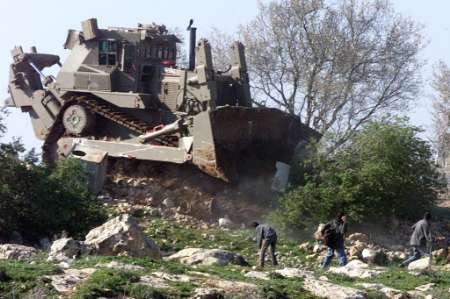The first part of the orientation was about the history of Hebrew University, including how despite being "liberated" in 1967, the campus is still surrounded by 3 hostile Arab villages. Then the director of the program turned to security. He implored us all to be vigilant looking for abandoned bags both on and off campus. He said that in the evenings students should stay in big groups, reminding them of the three nearby Arab villages.
Next was transportation. "How many of you promised your parents before you came not to use public buses (for fear of a suicide bomber)?" he asked. Twenty to thirty hands, out of the two hundred people, went up. "Keep that promise," he said. He continued, "Never get on the Arab bus. It doesn't go anywhere you want to go." He warned against going anywhere in the jurisdiction of the Palestinian Authority, recounting vague horror stories about Israeli children being kidnapped and taken into the West Bank. He qualified this however by saying that it should be all right to visit Jewish settlements in the West Bank.
Curious students cautiously raised their hands "What kind of bags should we be looking for that might be bombs?" one asked. "Any bag could be a bomb," he replied. "Even if you can see through the bag and see that it is just a loaf of bread. There could be a bomb inside the bread. Arab terrorists have been known to do that." Another queried, "What if we want to go to Eilat (a Red Sea resort)? Doesn't the Israeli highway to Eilat go through the West Bank?" He reassured her, "Yes, but you'll be ok as long as you stick to good Jewish transportation.
At this point I'd heard enough. I took my bag and left. If students follow his advice, they'll never see most of the fascinating historic parts of Jerusalem or get a sense of its unique character, shaped by thousands of years of history and culture. They'll never see the Holy Sepulcher, where Jesus is said to have been crucified, or walk the grounds of the Al Aqsa mosque, the third holiest site in Islam. They'll never hear the live Middle-Eastern music at the Jerusalem Hotel on a Friday night. They'll never see the sun set behind the golden Dome of the Rock from the Mount of Olives. They may as well not have come to Jerusalem at all.
If this type of misinformation and outright racism is being disseminated by Israeli universities, then they are indeed complicit in the growing apartheid regime taking hold here, making it harder and harder for Palestinian society, thousands of years in the making, to survive.
The human ability not to see what one doesn't want to see is phenomenal, especially when you've been told not to look.
Christian Peacemaker Teams is an ecumenical initiative to support violence reduction efforts around the world. To learn more about CPT's peacemaking work, visit our website www.cpt.org Photos of our projects are at www.cpt.org/

Nessun commento:
Posta un commento